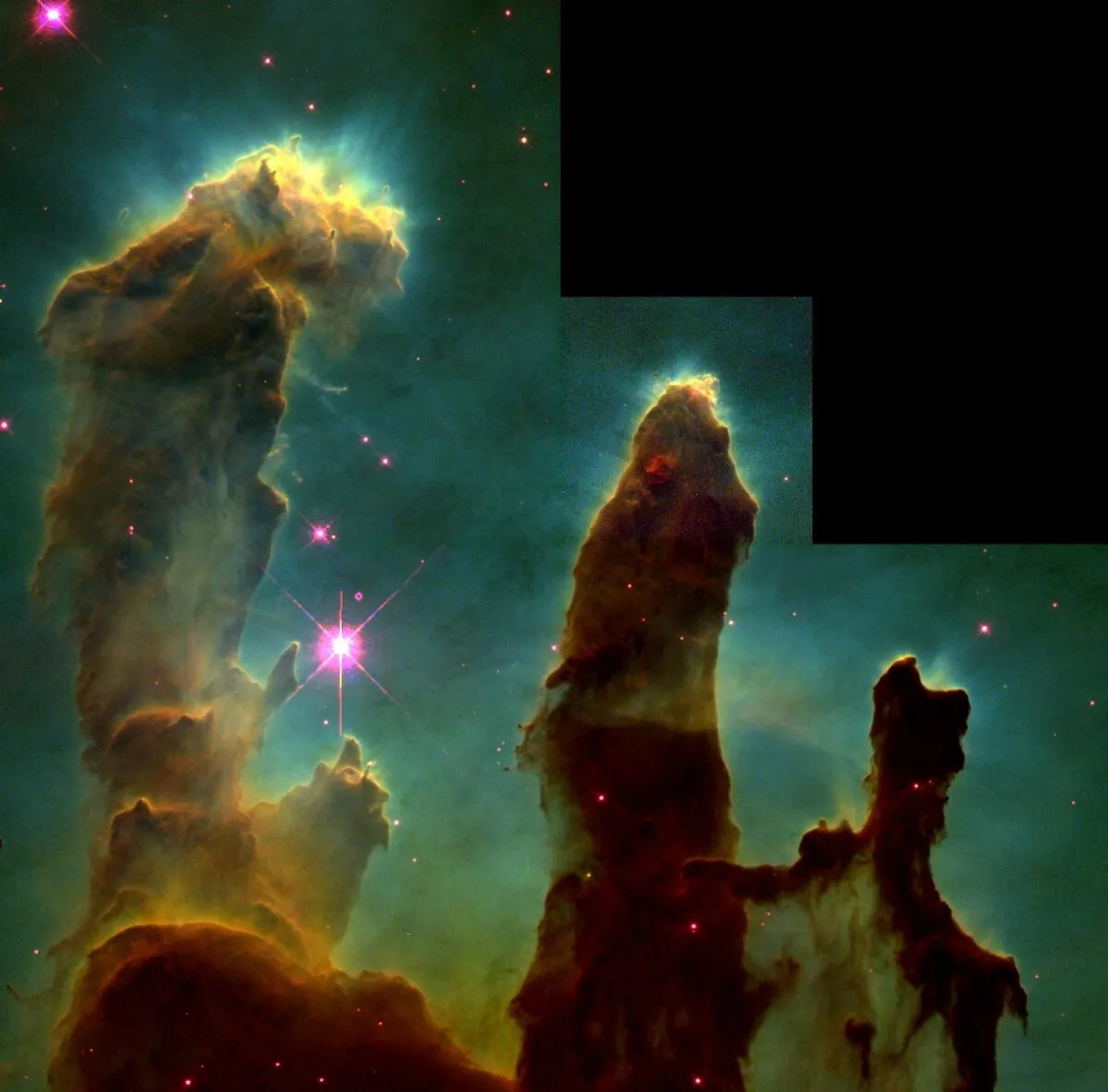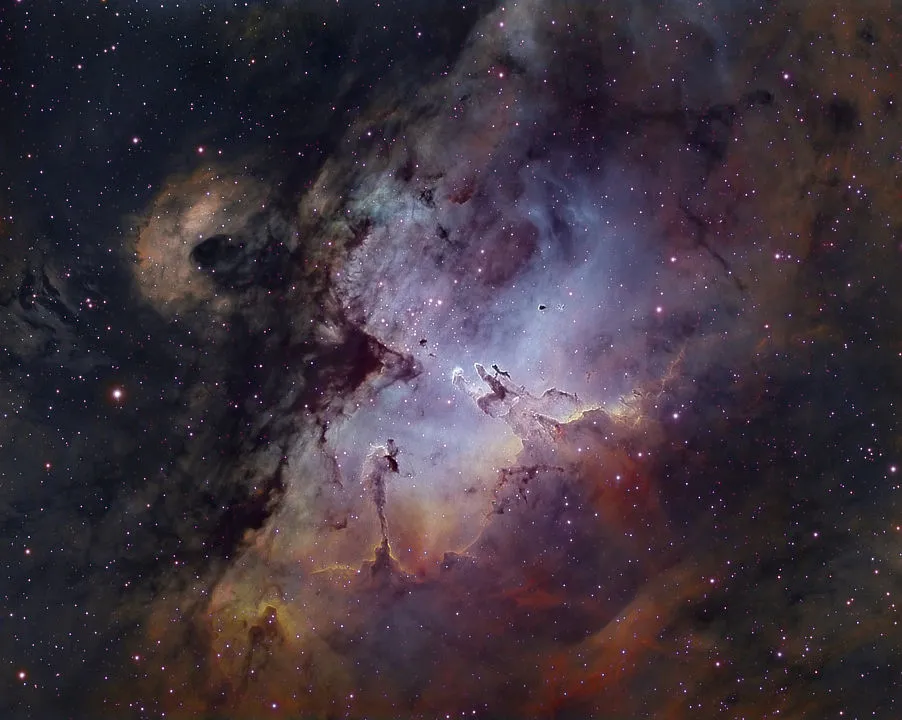The Eagle Nebula is an active star-forming region 7,000 lightyears away that spans 70 lightyears across. It is host to scorching hot newborn stars that illuminate, carve and sculpt the surrounding gas and dust.
The Eagle Nebula, also known as M16 in the Messier Catalogue, is probably best known because of the iconic Pillars of Creation, famously imaged by the Hubble Space Telescope.
The pillars are regions of dark dust and gas contained within the Eagle Nebula that stretch about 5 lightyears long and hide embedded newborn stars from view.
You might not realise it if you look solely at Hubble's Pillars of Creation image in isolation, but they really only make up a small portion of the Eagle Nebula region.
Want to see it for yourself? Read our guide on how to observe the Pillars of Creation

When the image was first released in 1995, it offered a vision of an active cosmos, where new stars were being born and carving out the region around them. The Universe, it was clear, is a living, changing thing.
The Pillars of Creation are part of a hollow in the Eagle Nebula carved out by star cluster NGC 6611, which is sculpting and illuminating the surrounding cosmic cloud.
They're so famous that often we forget to notice the entirety of the M16 region itself, which appears as an eagle stretching out its wings and soaring through the cosmos.

It is one of many nebulae that look like animals. Like meteorological clouds on Earth, astronomers have made a game over the years of nicknaming these deep-sky clouds depending on what they look like.
For a better view of the whole M16 region, take a look at our gallery of images of the Eagle Nebula below, captured by astrophotographers and BBC Sky at Night Magazine readers.
And for more info on photographing nebulae, read our deep-sky astrophotography guide.
If you do manage to capture an image of M16, don't forget to send us your images or share them with us on Facebook, Twitter and Instagram.